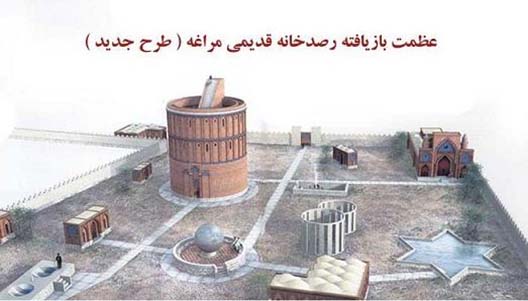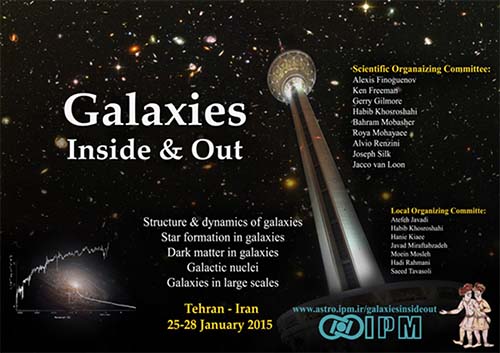ASTRONOMY IN IRAN
Archaeoastronomy in Iran
Astronomy in Iran routes back to many thousands years ago. When Cyrus the Great, the founder of the Persian Empire, captured Babylon in 539 B.C., magi who migrated there transformed Babylonian astronomy. They were the first to record planetary motion through constellations. In turn magi learned from the Babylonian astronomers as well and translated Babylonian books into the early Persian language. Andromeda galaxy was first identified by a Persian astronomer Abd al-Rahman al-Sufi calling it a little cloud in his book of fixed stars around 964. In 13th century, Maragheh Observatory with a unique place in the history of medieval astronomy, was established, representing a new wave of scientific activities in the Islamic world. It had a key role in the development of sophisticated pre-Copernican non-Ptolemaic systems for explaining the planetary motions, and it was the model for several observatories that were built in Persia, Transoxiana, and Asia Minor up to the 17th century.

Iranian astronomy today
Research in Astronomy and Astrophysics has been conducted in a number of universities in Iran. There are two dedicated research institutes in Iran, IPM School of Astronomy in Tehran and Research Institute for Astronomy and Astrophysics in Maragheh (RIAAM). Among the most active universities in astronomy one could name IASBS in Zanjan, Ferdowsi University of Mashhad (FUM), University of Tabriz, Shiraz, Birjand, Kerman and Zanjan universities, and Amirkabir University of Technology and Sharif University of Technology, both in Tehran. With nearly 400 members, the Astronomical Society of Iran (ASI) is a non-governmental organization that represents the Iranian community of astronomy internationally and with IAU, it coordinates various activities for professional and amateur astronomers and organizes training workshops, throughout the year. Iranian astronomers gather twice a year to share their ongoing research activities. The ASI also publishes an International Journal of Astronomy and Astrophysics (IJAA) which is a peer reviewed open access journal dedicated to original research and invited/review articles by distinguished astronomers around the world. Astronomy is also popular in Iranian schools. International Olympiad of Astronomy and Astrophysics (IOAA), in which Iranian teams do very well, see a participation of a few thousand students in a national exam. Last but not least, the public is fascinated by astronomy and there are few ten thousand amateur astronomers around the country even in the most remote settlements. Perhaps that is a reason why a 45 min TV program, night sky, has been aired for 2 decades.

